
“Spatial Composition 4” by Katarzyna Kobro (1928). (Photo: Public domain via WikiArt)
For many years, Polish sculptor Katarzyna Kobro saw her work overshadowed by the wreckage of World War II. As with many artists working during the period, Kobro’s personal and artistic life was completely altered during this period. After growing up during World War I and living in occupied territory during World War II, her story is forever intertwined with these events. However, since the mid-20th century, there has been a renewed appreciation for her work and now, she has rightfully taken her place as a leader of the Polish avant-garde.
Only about 20 of her sculptures still exist, some of which are reconstructions created after her death. But in this small and brilliant oeuvre, we can see her philosophies come to life. Kobro was also highly active as an intellectual, often publishing articles on her theories about art and participating in many art groups, such as Blok, Praesens, and a.r. group. She came of age in Russia during the dawn of Constructivism, and its principles based on form and functionality would be a guiding light in her work.
Learn more about this incredible trailblazing artist, and how her steel sculptures continue to influence the art world today.
|
Full Name
|
Katarzyna Kobro
|
|
Born
|
January 26, 1898 (Moscow, Russia)
|
|
Died
|
February 21, 1951 (Łódź, Poland)
|
|
Notable Artwork
|
Spatial Composition series
|
|
Movement
|
Constructivism
|
Who was Katarzyna Kobro?
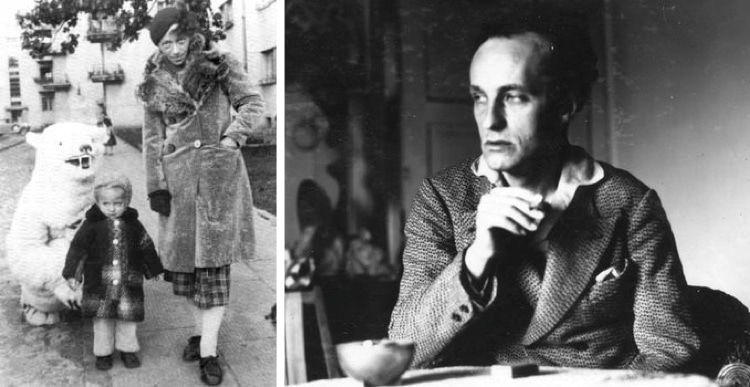
Left: Katarzyna Kobro with her daughter in 1938 (Photo: Unknown author, Public domain, via Wikimedia Commons) | Right: Władysław Strzemiński in 1932. (Photo: Public domain via Wikipedia)
Katarzyna Kobro (1898–1951) was a Polish avant-garde sculptor whose innovative work pushed the boundaries of abstract sculpture. Born into a family of mixed German and Russian heritage, she was born in Moscow but spent her early childhood in Latvia. She returned to Russia during World War I and studied at the Moscow School of Painting, Sculpture and Architecture.
She would later marry Polish artist Władysław Strzemiński and, in 1922, they fled to Poland as Russian authorities started a campaign to stamp out “New Art.” She would eventually gain Polish citizenship and, along with Strzemiński, become one of the most progressive interwar artists. While much of her artwork has been lost, what does remain only confirms her importance in pushing forward modern art. She rejected the idea of making subjective art, instead focusing on abstract sculptures that were based on spatial analysis and objective rules created during experimentation.
Constructivism
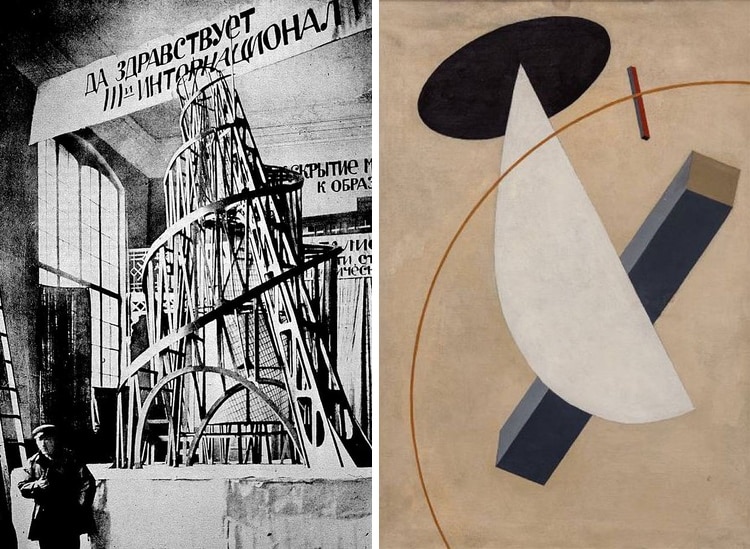
Left: Model for “Tatlin’s Tower” by Vladimir Tatlin (1919) (Photo: Unknown author, Public domain, via Wikimedia Commons) | Right: “Proun Vrashchenia’”by El Lissitzky (1919). (Photo: El Lissitzky, Public domain, via Wikimedia Commons)
To get a full picture of Kobro’s work, it’s worth investigating Constructivism. This art movement was started by Russian artists Vladimir Tatlin and Alexander Rodchenko in 1915. Kobro would have been well acquainted with their work, as they were all members of the Moscow City Artists’ Union of Painters, and Kobro’s early assemblages show the clear influence of Tatlin.
Firmly grounded in the industrial era, Constructivism called for abstraction, functionalism, and utilitarianism. By fully embracing the modern era, Constructivist artists focused on construction and the use of new materials like glass, steel, and plastic. There was also an emphasis on form and art that worked to blend with space. Therefore, Constructivism art is typically broken down into simplified, geometric forms. Flashy color palettes were eschewed in favor of monochromatics or the use of primary colors.
Deeming traditional art dead, the Constructivists typically turned their focus away from painting and were highly active in graphic design, architecture, sculpture, fashion design, decorative arts, and other art forms that they felt were more in service of the working class.
Constructivism did spread internationally and was seen as an art movement at the forefront of the modern era. But by the late 1920s, Stalin’s push for increased industrial production would give rise to a new movement, Social Realism. Based in nature, this would squash Constructivism, and, eventually, abstract art was seen as subversive and condemned by the government.
Still, Constructivism continued to influence artists, both in and out of Russia. It was particularly influential in architecture and would influence later movements like Bauhaus and De Stijl. Architects like Zaha Hadid, who was greatly influenced by Tatlin, and Rem Koolhaus would bring elements of Constructivism to their 21st-century architecture.
Spatial Compositions
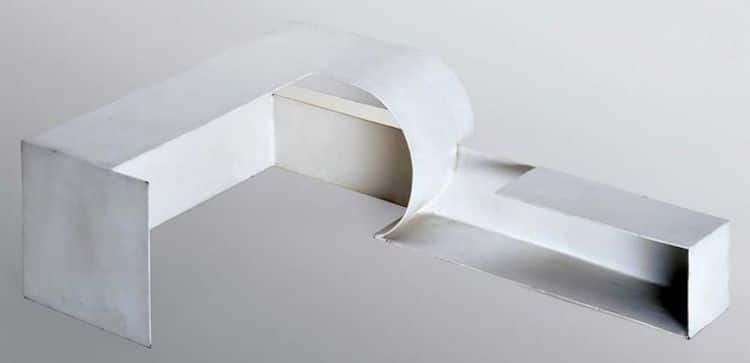
“Spatial Composition I” by Katarzyna Kobro (1925). (Photo: Public domain via WikiArt)
In 1920, Kobro created her first assemblage, ToS 75—Struktura. Though it is now lost, there are records of it in a 1931 book published by the couple. The work incorporated elements of Futurism and Cubism and was made from found industrial materials like bolts, screws, and cork. Several other lost sculptures were created in a short time period, many of which pay close attention to the use of space and were often composed of pre-fabricated materials.
After settling in Poland, Kobro started to produce her most well-known series of works, called Spatial Compositions. She created nine known pieces in this series from 1925 to 1933. The works are the perfect expression of Unism, a concept developed by Strzeminski and Kobro. Under Unism, for an artwork to be harmonious, the artist needed to perfectly marry color, geometry, and rhythm. Made from painted steel, Kobro’s Spatial Compositions were either monochromatic or presented in primary colors. In this way, the sculpture and its surrounding space become one.
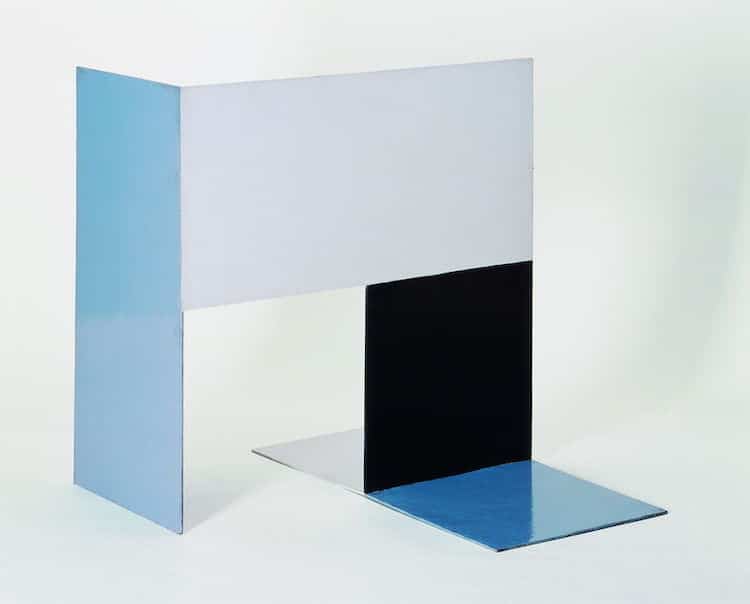
“Spatial Composition II” by Katarzyna Kobro (1928). (Photo: Public domain via WikiArt)
“Both sculpture and architecture should not be seen as static objects created by four discretely constructed sides,” Kobro and Strzemiński wrote, “but primarily as the process of the passage from one side to another, a function of the changes that happen when we move from one side to another, a spatial rhythm that occurs over time.”
When her Spatial Compositions were exhibited for the first time in 1926, many critics misunderstood their intent. One reviewer called them “pointless,” while another said that only three of her nine exhibited pieces deserved to be labeled as sculpture. But Kobro was strong in her convictions. She published many texts on the topic, once stating that “sculpture is only shaping the form in space.” For her, sculpture exists in space and the only forms that a sculpture should have are those that link it to the surrounding space.
The entire concept is succinctly explained by art historian Janina Ładnowska in her 2001 article on Kobro, “an Unistic sculpture is not just a sculptured shape; it sculpts space and is sculpted in space.”
a.r. group
In 1929, Kobro and Strzemiński, along with painter Henryk Stażewski and poets Jan Brzękowski and Julian Przyboś, founded the a.r. group. It’s believed that the collective’s name stands for “revolutionary artists” or “real avant-garde.” They published short bulletins and several books on avant-garde.
But, perhaps their most valuable contribution was helping to establish the Museum of Art in Łódź thanks to a collection of international modern art they spearheaded. Active until 1936, their contribution is unique because the collection is based on the donation of artworks directly by the artists themselves. This included Kobro and, today, the museum has the largest collection of her work. Much of it is displayed together with other avant-garde art in the Neo-plastic Room, which was designed by Strzemiński.
Later Career and World War II
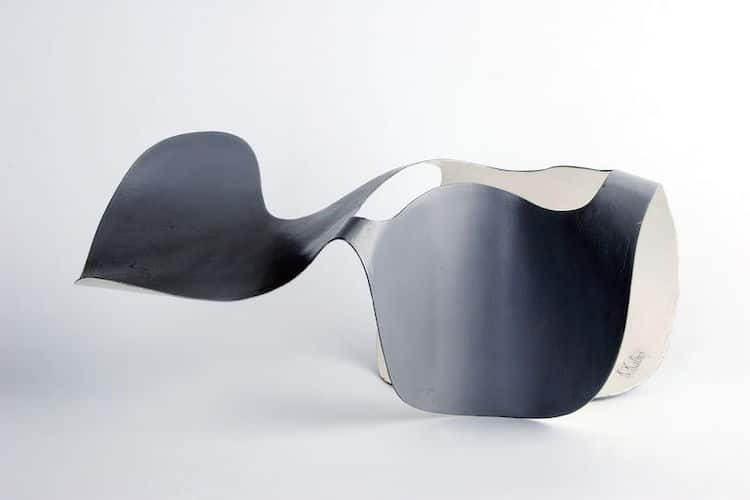
“Spatial Compositions 9” by Katarzyna Kobro (1933). (Photo: Public domain via WikiArt
By the mid-1930s, Kobro was no longer producing sculptures. This is perhaps the byproduct of her caring for her young daughter Nika, who was ill. The year 1936, the same year that Nika was born, was the last time that her art was publicly exhibited. That year her book, Functionalism, was published. In it, she reiterated her belief that spatial-temporal forms could translate to architecture, and society, that was harmonious.
The onset of World War II would have dire consequences for Kobro. In 1939, she and Strzemiński fled their apartment in Łódź when Nazis invaded the city. When she later returned to the apartment, which had been commandeered by German troops, much of her art had been placed in the garbage. As her family was of Russian origins, she signed her name to a “Russian list.” This saved her family from deportation and her remaining artwork was not confiscated, but would later have dire consequences.
Strzemiński had been against Kobro signing the list and, as World War II came to a close, they divorced. They would later become embroiled in a fierce custody battle for their daughter. As Kobro had effectively signed away her Polish citizenship during the occupation, she and others in the same position were then prosecuted. Though she was able to stay out of prison, she was effectively banned from having a public, artistic life. She could no longer exhibit her work or teach, which is how she’d often supported herself prior to the war. By the time she died from cancer in 1951, she was supporting herself by making felt toys, her contributions to modern art largely forgotten.
Legacy
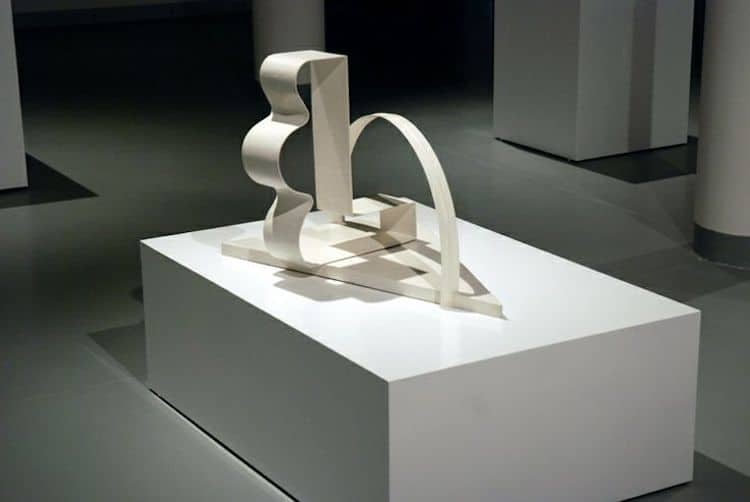
“Spatial Sculpture” by Katarzyna Kobro (1925). (Photo: Public domain via WikiArt)
Though Kobro was not alive to see it, time softened the view of artists who faced difficult choices during World War II. For a time, her art was overshadowed by the work of Strzemiński. But in 1966, Janusz Zagrodzki, who had previously written a monograph about Kobro’s work, set about reconstructing some of her lost sculptures. This gave a more complete picture of her oeuvre and sparked renewed interest in her contribution to art in the interwar period.
In 1973, Kobro’s work was included in an exhibition on Constructivism held at the Museum Folkwang in Essen and the Rijksmuseum Kröller-Müller in Otterlo. Her work with minimalism and fascination with art theory pushed her work to the forefront of the Constructivist movement. Throughout the 1980s and 1990s, critics and researchers studied her sculpture with interest, finally placing her in a favorable light.
In 1999, the Museum of Art in Łódź honored Kobro’s work with a solo exhibition. Currently, Spatial Composition 5 is on a five-year loan to New York’s Museum of Modern Art. This piece anchored a display called Katarzyna Kobro, Shaping Space that was on view until Spring 2022. And, further cementing her legacy in popular culture, in January 2022 a Google Doodle celebrated what would have been her 124th birthday.
Frequently Asked Questions
What is Katarzyna Kobro known for?
Katarzyna Kobro is a Polish sculptor known as a leader in the avant-garde movement in Central Europe. She was particularly active in the years between World War I and World War II. Part of the Constructivist art movement, she is most well known for her series of Spatial Composition sculptures made from painted steel.
How did Katarzyna Kobro die?
Katarzyna Kobro died in 1951 after a battle with cancer.
Related Articles:
10 Famous Abstract Artists Who Changed the Way We Look at Painting
Get to Know the Unsung Female Artists of Abstract Expressionism [Infographic]
Online Database Features Overlooked Female Artists from 15th-19th Centuries
Alma Thomas: The Life and Work of a 20th-Century Black Female Abstract Artist
